-

May
05
Interpretive Summary: Effects of a high-protein, high-fiber diet rich in antioxidants and L-carnitine on body weight, body composition, metabolic status, and physical activity levels of cats after spay surgery

Spay surgery helps control pet populations, but increases obesity due to increased appetite, decreased metabolic rate, and decreased energy expenditure. Our objective was to evaluate the effects of high-protein, high-fiber diet (HPHF), and moderate-protein, moderate-fiber diets (MPMF) in female cats following spay surgery.
Read more
-

May
05
Interpretive Summary:Zearalenone promotes follicle development through activating the SIRT1/PGC-1α signaling pathway in the ovaries of weaned gilts
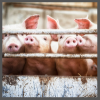
Zearalenone (ZEA), an estrogenic fusariotoxin, existing in various grains and feedstuffs, could disrupt the endocrine and reproductive systems. However, the underlying mechanisms of ZEA-induced follicular development have not been fully elucidated.
Read more
-

May
05
Interpretive Summary: Maternal supply of a source of omega-3 fatty acids and methionine during late gestation on the offspring’s growth, metabolism, carcass characteristic, and liver’s mRNA expression in sheep

Late gestation supplementation of omega-3 fatty acids (FAs) or methionine (Met) alters the offspring’s development. However, the effect of both nutrients on the physiology and growth of the progeny has not been explored.
Read more
-

May
05
Interpretive Summary: A comparison of indoor and outdoor calf housing systems using automated and manual feeding methods and their effect on calf health, behavior, growth, and labor
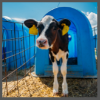
In this study, we compared indoor housing systems using automated and manual feeding methods and outdoor calf housing systems using manual feeding methods, to examine their effect on calf health, behavior, growth, and labor. Moving calves to their respective outdoor system commenced at approximately 18 d.
Read more
-

May
05
Interpretive Summary: Full-fat field cricket (Gryllus bimaculatus) as a substitute for fish meal and soybean meal for weaning piglets: effects on growth performance, intestinal health, and redox status
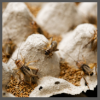
In this study, we demonstrate that the partial replacement of either fish meal or soybean meal with full-fat field cricket meal promotes growth and reduces the rate of diarrhea in weaning pigs.
Read more
-

May
05
Interpretive Summary: Effects of Chinese gallnut tannic acid on growth performance, blood parameters, antioxidative status, intestinal histomorphology, and cecal microbial shedding in broilers challenged with aflatoxin B1
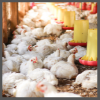
Plant extracts such as tannic acid (TA) have been demonstrated as effective agents to control AFB1 contamination. The objective of this study was to evaluate the effects of Chinese gallnut TA in preventing aflatoxicosis in broilers.
Read more
-

May
05
Interpretive Summary: Stair-step strategy and immunomodulatory feed ingredient supplementation for grazing heat-stressed
Bos indicus-influenced beef heifers
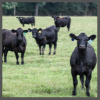
In Bos taurus beef heifers, altering the timing of body weight (BW) growth pattern either reduced feed costs without decreasing reproduction or enhanced reproduction without increasing feed costs.
Read more
-

May
05
Interpretive Summary: Influence of environmental factors and genetic variation on mitochondrial DNA copy number

This study investigated the genetic and non-genetic factors associated with mtDNA CN in a beef cattle population of 2,371 animals using whole-genome sequencing at low depth.
Read more
-

Apr
27
USDA report says food prices will continue to rise

The United States Department of Agriculture’s (USDA’s) Economic Research Service (ERS) has published the Food Price Outlook, 2022 report, using data from the February 2022 Consumer Price Index and Producer Price Index. The report found that food prices are expected to increase drastically over the next few months.
Read more
-

Apr
27
USDA establishes final rule for organic dairy
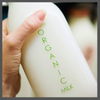
The United States Department of Agriculture’s (USDA) Agricultural Marketing Service (AMS) published the highly anticipated Origin of Livestock final rule for organic dairy. The amendment to the rule is said to increase uniformity in the origin of livestock production practice for organic dairy animals and reduce variance between the approaches taken by certifying agents.
Read more
-

Apr
27
USDA announces resources for meat and poultry industry

The United States Department of Agriculture (USDA) announced additional resources to increase and expand meat and poultry processing capacities. Up to $23.6 million is available to processors for technical assistance through the Meat, Poultry Readiness Grant program (MPIRG program).
Read more
-

Apr
27
US Japan reach trade agreement regarding beef

“This is a win-win for American ranchers and Japanese consumers,” said United States Ambassador to Japan, Rahm Emanuel. “It ensures certainty for years and shows American beef can compete and win anywhere anytime.”
Read more
-

Apr
27
Senate passes Ocean Shipping Reform Bill

The act seeks to resolve supply chains and ease shipping backlogs. It is important to note, that differences exist between the House and Senate versions, which will require dialogue between the two chambers.
Read more
-

Apr
27
Prop 12 goes to the Supreme Court

The Supreme Court of the United States (SCOTUS) has announced it will hear the case brought by the National Pork Producers Council (NPPC) and American Farm Bureau Federation (AFBF) against California’s Proposition 12 (Prop. 12). “It's a very exciting decision, it means the Supreme Court is interested in reviewing whether or not what California has done here is constitutional,” said Travis Cushman, Senior Counsel for Public Policy at AFBF.
Read more
-

Apr
27
Pork producers request congressional support

“Challenges facing our industry continue to evolve, and we hope our efforts this week help lawmakers understand why these issues are so important to the livelihoods of producers and the future of our industry,” said Terry Wolters, NPPC president.
Read more
-

Apr
27
Feeding the Economy Report released

To measure the total economic impact of the sectors, the analysis also includes the direct and indirect economic activity surrounding these industries, capturing both upstream and downstream activity. For example, when a farm equipment retailer hires new employees because farmers are buying more tractors, experts consider the new salaries an indirect impact.
Read more
-

Apr
27
DGA 2025-2030 public comments open in April

The DGA provides science-based advice on what to eat and drink to promote health, reduce the risk of chronic disease, and meet nutrient needs. It is designed for policymakers and nutrition and health professionals to help all individuals and their families consume a healthy, nutritionally adequate diet.
Read more
-

Apr
27
Dairy groups encourage improving nutrition security to USDA
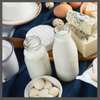
Earlier this year, USDA announced transitional standards that will begin in the school year (SY) 2022-2023, running through SY 2023-2024. The goal is to give schools time to transition from current, pandemic operations, toward more nutritious meals.
Read more
-

Apr
21
Interpretive Summary: Incomplete degradation products of galactomannan from Sesbania cannabina modulated the cecal microbial community of laying hens
.png?sfvrsn=b6c04dd1_0)
The health and nutritional status of poultry are largely interconnected with the gut microbiome, which directly or indirectly affects gut morphology, nutrition, and immune responses.
Read more
-

Apr
21
Interpretive Summary: Oxidation of amino acids, glucose, and fatty acids as metabolic fuels in enterocytes of post-hatching developing chickens

Glucose and fatty acids have long been regarded as the primary sources of energy for the absorptive epithelial cells (enterocytes) of the avian small intestine. However, little is known about the use of amino acids for ATP production in these cells.
Read more
 MayInterpretive Summary: Effects of a high-protein, high-fiber diet rich in antioxidants and L-carnitine on body weight, body composition, metabolic status, and physical activity levels of cats after spay surgery
MayInterpretive Summary: Effects of a high-protein, high-fiber diet rich in antioxidants and L-carnitine on body weight, body composition, metabolic status, and physical activity levels of cats after spay surgery Spay surgery helps control pet populations, but increases obesity due to increased appetite, decreased metabolic rate, and decreased energy expenditure. Our objective was to evaluate the effects of high-protein, high-fiber diet (HPHF), and moderate-protein, moderate-fiber diets (MPMF) in female cats following spay surgery.
Spay surgery helps control pet populations, but increases obesity due to increased appetite, decreased metabolic rate, and decreased energy expenditure. Our objective was to evaluate the effects of high-protein, high-fiber diet (HPHF), and moderate-protein, moderate-fiber diets (MPMF) in female cats following spay surgery. MayInterpretive Summary:Zearalenone promotes follicle development through activating the SIRT1/PGC-1α signaling pathway in the ovaries of weaned gilts
MayInterpretive Summary:Zearalenone promotes follicle development through activating the SIRT1/PGC-1α signaling pathway in the ovaries of weaned gilts Zearalenone (ZEA), an estrogenic fusariotoxin, existing in various grains and feedstuffs, could disrupt the endocrine and reproductive systems. However, the underlying mechanisms of ZEA-induced follicular development have not been fully elucidated.
Zearalenone (ZEA), an estrogenic fusariotoxin, existing in various grains and feedstuffs, could disrupt the endocrine and reproductive systems. However, the underlying mechanisms of ZEA-induced follicular development have not been fully elucidated. MayInterpretive Summary: Maternal supply of a source of omega-3 fatty acids and methionine during late gestation on the offspring’s growth, metabolism, carcass characteristic, and liver’s mRNA expression in sheep
MayInterpretive Summary: Maternal supply of a source of omega-3 fatty acids and methionine during late gestation on the offspring’s growth, metabolism, carcass characteristic, and liver’s mRNA expression in sheep Late gestation supplementation of omega-3 fatty acids (FAs) or methionine (Met) alters the offspring’s development. However, the effect of both nutrients on the physiology and growth of the progeny has not been explored.
Late gestation supplementation of omega-3 fatty acids (FAs) or methionine (Met) alters the offspring’s development. However, the effect of both nutrients on the physiology and growth of the progeny has not been explored. MayInterpretive Summary: A comparison of indoor and outdoor calf housing systems using automated and manual feeding methods and their effect on calf health, behavior, growth, and labor
MayInterpretive Summary: A comparison of indoor and outdoor calf housing systems using automated and manual feeding methods and their effect on calf health, behavior, growth, and labor In this study, we compared indoor housing systems using automated and manual feeding methods and outdoor calf housing systems using manual feeding methods, to examine their effect on calf health, behavior, growth, and labor. Moving calves to their respective outdoor system commenced at approximately 18 d.
In this study, we compared indoor housing systems using automated and manual feeding methods and outdoor calf housing systems using manual feeding methods, to examine their effect on calf health, behavior, growth, and labor. Moving calves to their respective outdoor system commenced at approximately 18 d. MayInterpretive Summary: Full-fat field cricket (Gryllus bimaculatus) as a substitute for fish meal and soybean meal for weaning piglets: effects on growth performance, intestinal health, and redox status
MayInterpretive Summary: Full-fat field cricket (Gryllus bimaculatus) as a substitute for fish meal and soybean meal for weaning piglets: effects on growth performance, intestinal health, and redox status In this study, we demonstrate that the partial replacement of either fish meal or soybean meal with full-fat field cricket meal promotes growth and reduces the rate of diarrhea in weaning pigs.
In this study, we demonstrate that the partial replacement of either fish meal or soybean meal with full-fat field cricket meal promotes growth and reduces the rate of diarrhea in weaning pigs. MayInterpretive Summary: Effects of Chinese gallnut tannic acid on growth performance, blood parameters, antioxidative status, intestinal histomorphology, and cecal microbial shedding in broilers challenged with aflatoxin B1
MayInterpretive Summary: Effects of Chinese gallnut tannic acid on growth performance, blood parameters, antioxidative status, intestinal histomorphology, and cecal microbial shedding in broilers challenged with aflatoxin B1 Plant extracts such as tannic acid (TA) have been demonstrated as effective agents to control AFB1 contamination. The objective of this study was to evaluate the effects of Chinese gallnut TA in preventing aflatoxicosis in broilers.
Plant extracts such as tannic acid (TA) have been demonstrated as effective agents to control AFB1 contamination. The objective of this study was to evaluate the effects of Chinese gallnut TA in preventing aflatoxicosis in broilers. MayInterpretive Summary: Stair-step strategy and immunomodulatory feed ingredient supplementation for grazing heat-stressed Bos indicus-influenced beef heifers
MayInterpretive Summary: Stair-step strategy and immunomodulatory feed ingredient supplementation for grazing heat-stressed Bos indicus-influenced beef heifers In Bos taurus beef heifers, altering the timing of body weight (BW) growth pattern either reduced feed costs without decreasing reproduction or enhanced reproduction without increasing feed costs.
In Bos taurus beef heifers, altering the timing of body weight (BW) growth pattern either reduced feed costs without decreasing reproduction or enhanced reproduction without increasing feed costs. MayInterpretive Summary: Influence of environmental factors and genetic variation on mitochondrial DNA copy number
MayInterpretive Summary: Influence of environmental factors and genetic variation on mitochondrial DNA copy number This study investigated the genetic and non-genetic factors associated with mtDNA CN in a beef cattle population of 2,371 animals using whole-genome sequencing at low depth.
This study investigated the genetic and non-genetic factors associated with mtDNA CN in a beef cattle population of 2,371 animals using whole-genome sequencing at low depth. AprUSDA report says food prices will continue to rise
AprUSDA report says food prices will continue to rise The United States Department of Agriculture’s (USDA’s) Economic Research Service (ERS) has published the Food Price Outlook, 2022 report, using data from the February 2022 Consumer Price Index and Producer Price Index. The report found that food prices are expected to increase drastically over the next few months.
The United States Department of Agriculture’s (USDA’s) Economic Research Service (ERS) has published the Food Price Outlook, 2022 report, using data from the February 2022 Consumer Price Index and Producer Price Index. The report found that food prices are expected to increase drastically over the next few months. AprUSDA establishes final rule for organic dairy
AprUSDA establishes final rule for organic dairy The United States Department of Agriculture’s (USDA) Agricultural Marketing Service (AMS) published the highly anticipated Origin of Livestock final rule for organic dairy. The amendment to the rule is said to increase uniformity in the origin of livestock production practice for organic dairy animals and reduce variance between the approaches taken by certifying agents.
The United States Department of Agriculture’s (USDA) Agricultural Marketing Service (AMS) published the highly anticipated Origin of Livestock final rule for organic dairy. The amendment to the rule is said to increase uniformity in the origin of livestock production practice for organic dairy animals and reduce variance between the approaches taken by certifying agents. AprUSDA announces resources for meat and poultry industry
AprUSDA announces resources for meat and poultry industry The United States Department of Agriculture (USDA) announced additional resources to increase and expand meat and poultry processing capacities. Up to $23.6 million is available to processors for technical assistance through the Meat, Poultry Readiness Grant program (MPIRG program).
The United States Department of Agriculture (USDA) announced additional resources to increase and expand meat and poultry processing capacities. Up to $23.6 million is available to processors for technical assistance through the Meat, Poultry Readiness Grant program (MPIRG program). AprUS Japan reach trade agreement regarding beef
AprUS Japan reach trade agreement regarding beef “This is a win-win for American ranchers and Japanese consumers,” said United States Ambassador to Japan, Rahm Emanuel. “It ensures certainty for years and shows American beef can compete and win anywhere anytime.”
“This is a win-win for American ranchers and Japanese consumers,” said United States Ambassador to Japan, Rahm Emanuel. “It ensures certainty for years and shows American beef can compete and win anywhere anytime.” AprSenate passes Ocean Shipping Reform Bill
AprSenate passes Ocean Shipping Reform Bill The act seeks to resolve supply chains and ease shipping backlogs. It is important to note, that differences exist between the House and Senate versions, which will require dialogue between the two chambers.
The act seeks to resolve supply chains and ease shipping backlogs. It is important to note, that differences exist between the House and Senate versions, which will require dialogue between the two chambers. AprProp 12 goes to the Supreme Court
AprProp 12 goes to the Supreme Court The Supreme Court of the United States (SCOTUS) has announced it will hear the case brought by the National Pork Producers Council (NPPC) and American Farm Bureau Federation (AFBF) against California’s Proposition 12 (Prop. 12). “It's a very exciting decision, it means the Supreme Court is interested in reviewing whether or not what California has done here is constitutional,” said Travis Cushman, Senior Counsel for Public Policy at AFBF.
The Supreme Court of the United States (SCOTUS) has announced it will hear the case brought by the National Pork Producers Council (NPPC) and American Farm Bureau Federation (AFBF) against California’s Proposition 12 (Prop. 12). “It's a very exciting decision, it means the Supreme Court is interested in reviewing whether or not what California has done here is constitutional,” said Travis Cushman, Senior Counsel for Public Policy at AFBF. AprPork producers request congressional support
AprPork producers request congressional support “Challenges facing our industry continue to evolve, and we hope our efforts this week help lawmakers understand why these issues are so important to the livelihoods of producers and the future of our industry,” said Terry Wolters, NPPC president.
“Challenges facing our industry continue to evolve, and we hope our efforts this week help lawmakers understand why these issues are so important to the livelihoods of producers and the future of our industry,” said Terry Wolters, NPPC president. AprFeeding the Economy Report released
AprFeeding the Economy Report released To measure the total economic impact of the sectors, the analysis also includes the direct and indirect economic activity surrounding these industries, capturing both upstream and downstream activity. For example, when a farm equipment retailer hires new employees because farmers are buying more tractors, experts consider the new salaries an indirect impact.
To measure the total economic impact of the sectors, the analysis also includes the direct and indirect economic activity surrounding these industries, capturing both upstream and downstream activity. For example, when a farm equipment retailer hires new employees because farmers are buying more tractors, experts consider the new salaries an indirect impact. AprDGA 2025-2030 public comments open in April
AprDGA 2025-2030 public comments open in April The DGA provides science-based advice on what to eat and drink to promote health, reduce the risk of chronic disease, and meet nutrient needs. It is designed for policymakers and nutrition and health professionals to help all individuals and their families consume a healthy, nutritionally adequate diet.
The DGA provides science-based advice on what to eat and drink to promote health, reduce the risk of chronic disease, and meet nutrient needs. It is designed for policymakers and nutrition and health professionals to help all individuals and their families consume a healthy, nutritionally adequate diet. AprDairy groups encourage improving nutrition security to USDA
AprDairy groups encourage improving nutrition security to USDA Earlier this year, USDA announced transitional standards that will begin in the school year (SY) 2022-2023, running through SY 2023-2024. The goal is to give schools time to transition from current, pandemic operations, toward more nutritious meals.
Earlier this year, USDA announced transitional standards that will begin in the school year (SY) 2022-2023, running through SY 2023-2024. The goal is to give schools time to transition from current, pandemic operations, toward more nutritious meals. AprInterpretive Summary: Incomplete degradation products of galactomannan from Sesbania cannabina modulated the cecal microbial community of laying hens
AprInterpretive Summary: Incomplete degradation products of galactomannan from Sesbania cannabina modulated the cecal microbial community of laying hens.png?sfvrsn=b6c04dd1_0) The health and nutritional status of poultry are largely interconnected with the gut microbiome, which directly or indirectly affects gut morphology, nutrition, and immune responses.
The health and nutritional status of poultry are largely interconnected with the gut microbiome, which directly or indirectly affects gut morphology, nutrition, and immune responses. AprInterpretive Summary: Oxidation of amino acids, glucose, and fatty acids as metabolic fuels in enterocytes of post-hatching developing chickens
AprInterpretive Summary: Oxidation of amino acids, glucose, and fatty acids as metabolic fuels in enterocytes of post-hatching developing chickens Glucose and fatty acids have long been regarded as the primary sources of energy for the absorptive epithelial cells (enterocytes) of the avian small intestine. However, little is known about the use of amino acids for ATP production in these cells.
Glucose and fatty acids have long been regarded as the primary sources of energy for the absorptive epithelial cells (enterocytes) of the avian small intestine. However, little is known about the use of amino acids for ATP production in these cells.



